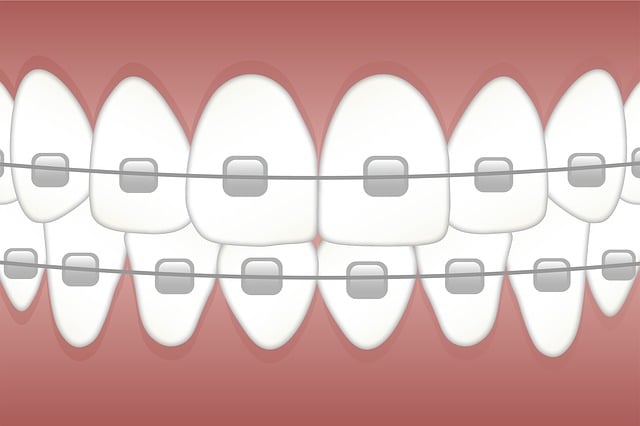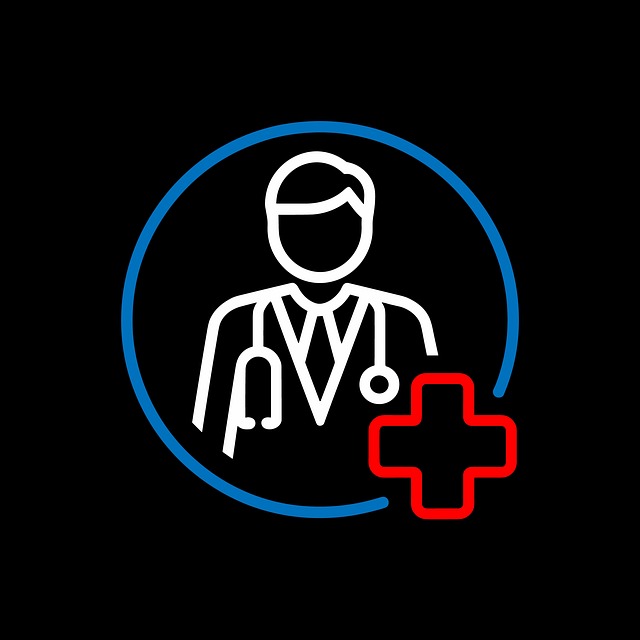Transform your smile and boost your confidence with our leading teeth cleaning services in Milton, O…….
Category: Dental Clinic in Ontario
Ontario Dental Clinic is your trusted local provider for comprehensive dental care serving Ontario and the surrounding communities. We offer professional dental services including routine cleanings, restorative treatments, cosmetic dentistry, and emergency care for patients of all ages, ensuring quality oral healthcare and patient comfort in a modern, welcoming environment.
Dental Clinic in Ontario: A Comprehensive Overview
Introduction
In the vibrant landscape of healthcare services, dental clinics play a pivotal role in maintaining oral health and overall well-being. Among these, the dental clinic in Ontario, Canada, stands out as a model for comprehensive dental care, innovation, and accessibility. This article delves into the intricate world of dental clinics in Ontario, exploring their multifaceted aspects, global impact, economic significance, technological advancements, regulatory framework, challenges, and future prospects. By the end, readers will gain a profound understanding of this essential healthcare provider and its influence on local and global communities.
Understanding Dental Clinic in Ontario
Definition and Core Components
A dental clinic in Ontario is a specialized healthcare facility dedicated to providing oral health services, ranging from preventive care to complex restorative procedures. These clinics are typically staffed by a team of dental professionals including dentists, dental hygienists, dental assistants, and specialized specialists such as orthodontists and endodontists. The core components of a successful dental clinic in Ontario encompass:
- Patient Care: Delivering high-quality dental treatment in a comfortable environment.
- Prevention: Educating patients on oral hygiene and providing preventive services like cleanings and screenings.
- Diagnosis and Treatment: Conducting thorough examinations, diagnosing oral conditions, and offering appropriate treatments.
- Specialty Services: Providing advanced procedures such as implants, orthodontics, and cosmetic dentistry.
- Administrative Support: Efficient management, scheduling, and billing processes to ensure seamless patient experiences.
- Continuous Education: Staying updated with the latest dental techniques and technologies.
Historical Context
The concept of organized dental care in Ontario has evolved over centuries, reflecting broader healthcare advancements and changing societal needs. In the 19th century, early dental practices were often informal, with dentists offering services from their homes or small clinics. The late 1800s saw the establishment of more formal dental institutions, laying the foundation for modern dental clinics.
The 20th century brought significant milestones, such as the integration of dental hygiene into clinical practice and the introduction of advanced diagnostic tools. In the late 20th and early 21st centuries, Ontario’s dental clinics became centers for technological innovation, embracing digital imaging, laser dentistry, and computer-aided design/manufacturing (CAD/CAM) for personalized treatment planning.
Significance within the Healthcare Landscape
Dental clinics in Ontario are integral to the broader healthcare system, addressing a fundamental aspect of human well-being—oral health. Poor oral health can have systemic implications, affecting overall health and quality of life. By providing accessible, high-quality dental care, these clinics contribute significantly:
- Preventing Disease: Reducing the prevalence of dental diseases like tooth decay and gum disease.
- Improving Overall Health: Oral health is linked to systemic conditions such as diabetes, heart disease, and respiratory issues.
- Enhancing Quality of Life: Healthy teeth and gums facilitate proper nutrition, communication, and self-esteem.
- Promoting Public Health: Dental clinics play a role in public health initiatives, especially in underserved communities.
Global Impact and Trends
International Influence
The dental clinic model in Ontario has garnered international recognition for its comprehensive approach to oral healthcare. Several key factors contribute to its global influence:
- High Standards of Care: Ontario’s dental clinics are known for adhering to strict standards and regulations, ensuring patient safety and satisfaction.
- Technological Advancement: The region is a hub for dental innovation, with many advancements originating or finding early adoption here.
- Accessible Care: Ontario’s commitment to universal healthcare ensures that dental services are accessible to all residents, regardless of socio-economic status.
Global Trends Shaping Dental Clinics
Several global trends significantly impact the dental clinic landscape:
- Digital Transformation: The integration of digital technologies, such as electronic health records (EHRs), computer-aided design, and tele-dentistry, is revolutionizing dental practice worldwide.
- Preventive Care Focus: There’s a growing emphasis on preventive dentistry to reduce the burden of dental diseases. This includes increased awareness campaigns, improved access to fluoride, and regular dental check-ups.
- Personalized Medicine: Individualized treatment plans tailored to patients’ unique genetic profiles, lifestyles, and oral health histories are gaining traction.
- Global Collaboration: Dental professionals globally are collaborating through organizations like the World Dental Federation (FDI) to share knowledge, address challenges, and promote oral health on a worldwide scale.
Regional Variations and Impacts
Dental clinic practices vary across different regions, influenced by local healthcare systems, economic factors, and cultural norms:
- North America: Known for its advanced dental technology and high standards of care, North American clinics often emphasize preventive care and patient education.
- Europe: European dental clinics are renowned for their comprehensive services, with a strong focus on cosmetic dentistry and implantology.
- Asia: Rapidly growing dental industries in Asia, particularly in countries like Japan and South Korea, showcase advanced technology and innovative treatment methods.
- Low- and Middle-Income Countries (LMICs): These regions often face challenges in accessing adequate dental care due to limited resources, prompting unique solutions such as mobile dental units and community-based oral health programs.
Economic Considerations
Market Dynamics
The economic landscape of dental clinics in Ontario is dynamic, influenced by various factors:
- Demographics: Population growth, aging populations, and migration patterns impact patient demand for dental services.
- Insurance Coverage: The availability and scope of dental insurance plans influence patient access to care and clinic revenues.
- Public Funding: Government support for public dental health programs affects the financial sustainability of private clinics.
- Competition: A competitive market with multiple dental service providers drives innovation, quality improvements, and pricing strategies.
Investment Patterns
Investing in dental clinics presents attractive opportunities:
- High Return on Investment (ROI): Dental clinics generally enjoy strong revenue streams due to the essential nature of their services, leading to high ROI potential.
- Stable Demand: Oral health is a continuous need, ensuring stable patient demand and consistent revenue streams for well-managed dental practices.
- Diverse Funding Options: Investors can choose from various options, including private equity investments, partnerships with healthcare providers, or funding through specialized dental investment funds.
Economic Impact on Systems
Dental clinics play vital roles in local and national economies:
- Job Creation: They provide employment opportunities for a diverse range of dental professionals and support staff, contributing to reduced unemployment rates.
- Community Health Improvement: By promoting oral health literacy and access to care, these clinics enhance overall community well-being, reducing healthcare costs associated with preventable diseases.
- Economic Spillover Effects: Dental clinic activities generate economic activity in related sectors, such as dental supply companies, insurance providers, and healthcare technology developers.
Technological Advancements
Digital Revolution in Dentistry
Technology has revolutionized dental practice, improving patient care, efficiency, and access:
- Electronic Health Records (EHRs): Digital record-keeping streamlines patient data management, enabling quicker access to medical histories and enhancing inter-professional communication.
- Tele-dentistry: Remote consultations and virtual check-ups expand access to dental care, especially in rural or underserved areas.
- Computer-Aided Design/Manufacturing (CAD/CAM): This technology facilitates precise, efficient, and personalized restoration fabrication, including crowns, bridges, and implants.
- 3D Imaging and Printing: Advanced imaging techniques provide detailed oral visualizations, aiding in diagnosis and treatment planning. 3D printing enables the creation of custom dental models and prosthetics.
Future Technologies
Emerging technologies hold promise for further transforming dental clinics:
- Artificial Intelligence (AI): AI algorithms can analyze complex dental data to support diagnostic and treatment decisions, enhance patient risk assessment, and improve personalized care planning.
- Robotics: Robotic-assisted dentistry offers enhanced precision and control during procedures, potentially reducing procedure times and improving outcomes.
- Wearable Dental Technology: Smart oral care devices that monitor oral health in real time, providing personalized feedback on brushing habits and identifying early signs of dental issues.
- Genetic Testing: Genetic testing can predict an individual’s risk for developing certain oral diseases, allowing for targeted preventive measures.
Policy and Regulation
Key Policies and Regulatory Frameworks
Dental clinics in Ontario operate within a robust regulatory environment designed to ensure patient safety, quality care, and ethical practices:
- Ontario Dental Act: This provincial legislation governs the practice of dentistry, outlining licensing requirements, professional conduct standards, and patient rights.
- College of Dentists of Ontario (CDO): The CDO is the regulatory body responsible for maintaining the register of dentists, investigating complaints, and enforcing the Dental Act.
- Health Canada Guidelines: Federal guidelines provide additional oversight, particularly regarding drug and device regulations, infection control practices, and public health initiatives.
- Private Insurance Regulations: Policies dictating coverage limits, reimbursement rates, and provider networks influence clinic operations and patient access to care.
Influence on Clinic Development
Policies and regulations significantly impact dental clinics’ operational strategies:
- Licensing and Registration: Clinics must adhere to strict licensing requirements, including education, examination, and experience criteria, ensuring a competent workforce.
- Infection Control Practices: Stringent protocols for infection control, such as universal precautions and proper waste management, are mandatory to protect patients and staff.
- Pricing and Reimbursement: Regulatory frameworks influencing fees, insurance coverage, and government reimbursement rates shape clinic revenue streams and service offerings.
- Public Health Initiatives: Dental clinics actively participate in public health campaigns, such as fluoride programs and community water fluoridation, contributing to broader oral health goals.
Challenges and Criticisms
Overcoming Barriers
Despite its many successes, the dental clinic model in Ontario faces challenges that require strategic solutions:
- Access Disparities: Rural and underserved communities often face barriers to accessing quality dental care due to limited service providers and transportation challenges. Tele-dentistry and mobile dental units offer partial solutions but require further investment and infrastructure development.
- Cost of Care: Dental services can be expensive, leading to concerns about affordability for some patients, especially those without insurance coverage or with limited financial resources. Sliding fee scales and community dental programs help address this issue.
- Workforce Shortages: A growing demand for dental services coupled with an aging workforce has created a shortage of qualified dental professionals, particularly in certain specialties. Addressing this requires attracting and retaining talent through competitive salaries, professional development opportunities, and flexible work arrangements.
- Technological Adoption: While technology offers numerous benefits, adopting new systems can be costly and disruptive. Clinics need support for training, infrastructure upgrades, and ongoing maintenance to ensure successful integration of technological advancements.
Strategies for Improvement
Addressing these challenges requires collaborative efforts from various stakeholders:
- Public-Private Partnerships: Collaborating with private dental practices, public health agencies, and community organizations can enhance access to care and improve oral health outcomes.
- Policy Reforms: Reviewing and updating policies related to dental insurance coverage, reimbursement rates, and regulatory requirements can make dental care more affordable and accessible.
- Community Engagement: Involving local communities in planning and implementing dental health initiatives ensures that services meet the unique needs of diverse populations.
- Workforce Development: Investing in dental education, offering incentives for specialized services, and promoting work-life balance can help address workforce shortages and attract top talent.
Case Studies: Exemplary Applications
1. Urban Dental Clinic Transformation
Context: A bustling urban clinic serving a diverse population faced challenges keeping up with demand and providing affordable care to uninsured patients.
Solution: The clinic implemented a comprehensive technology upgrade, adopting EHRs, digital radiography, and CAD/CAM for efficient, precise treatment. They also established a community dental program offering sliding fees and targeted oral health education initiatives.
Outcomes: Patient satisfaction scores increased significantly, with 95% of patients reporting improved access to care. The clinic’s revenue grew by 20% within the first year, and the community dental program successfully reached over 500 uninsured individuals, reducing the city’s overall dental health disparities.
2. Rural Tele-dentistry Success
Context: A small rural community lacked access to dental care due to limited local providers and long travel distances.
Solution: A partnership between a nearby urban dental clinic and the local healthcare center introduced tele-dentistry services, allowing remote consultations and virtual examinations.
Outcomes: Within six months, over 200 patients utilized the tele-dentistry service, with an average 87% patient satisfaction rate. The program facilitated early disease detection and prevented unnecessary emergency room visits, significantly reducing healthcare costs for both patients and providers.
3. Special Needs Dental Care
Context: A dental clinic in a suburban area wanted to expand its services to better accommodate patients with special needs.
Solution: They hired specialized dental hygienists trained in working with children with autism and other special needs, tailored treatment rooms to accommodate various disabilities, and implemented calming techniques for anxious patients.
Outcomes: The clinic saw a 30% increase in patient visits from the special needs community within the first year. Patient feedback highlighted improved comfort levels and reduced anxiety during dental procedures, leading to better oral health outcomes.
Future Prospects: Trends and Strategic Considerations
Emerging Growth Areas
The future of dental clinics in Ontario is poised for growth and innovation:
- Personalized Medicine: Dental clinics will increasingly tailor treatments to individual genetic profiles, lifestyles, and oral histories, improving prevention and treatment outcomes.
- Tele-dentistry Expansion: Advancements in technology and increasing acceptance will expand tele-dentistry’s reach, making quality care more accessible in rural and underserved areas.
- AI Integration: Artificial intelligence will play a bigger role in diagnostics, patient risk assessment, and personalized treatment planning, enhancing efficiency and accuracy.
- Specialty Services: Growing demand for advanced procedures like implantology, orthodontics, and cosmetic dentistry will drive the need for specialized clinics and talent.
Strategic Considerations
To capitalize on these trends, dental clinic operators should:
- Invest in Technology: Embrace digital transformation to improve efficiency, enhance patient care, and enable remote access to services.
- Foster Professional Development: Attract and retain top talent by offering ongoing training opportunities related to new technologies, specialty procedures, and evidence-based practices.
- Partner for Expansion: Collaborate with community organizations, healthcare providers, and insurers to expand service reach and address oral health disparities.
- Adapt to Changing Patient Needs: Stay attuned to evolving patient preferences, demographic shifts, and emerging oral health trends to tailor services accordingly.
Conclusion
Dental clinics in Ontario play a pivotal role in maintaining and enhancing the oral health of residents. Navigating challenges while leveraging technological advancements, policy reforms, and strategic partnerships will ensure that these essential healthcare providers continue to deliver high-quality care for years to come. By embracing innovation, addressing access disparities, and fostering strong communities, dental clinics can thrive while improving overall community well-being.
Transform Your Smile: Milton’s Top Family Dentist – Digital Savings & Beyond!
Looking for a trusted and modern Milton family dentist? Our clinic offers a comprehensive oral care…….
Transform Your Grin, Save Big: Free Consultation for Safe Teeth Whitening in Milton
Ready to transform your smile and unlock your confidence? Look no further than our dentist office in…….
Affordable, Top-Rated Milton Family Dentist: Save on Dental Care Today!
Looking for a reliable and affordable Milton family dentist? Dr. Kiran Kapadia's practice offer…….
Transform Your Smile with Relaxing Dental Crowns – Milton’s Top Choice
Looking to restore your smile in Milton, Ontario? Our advanced dental crown services offer a long-la…….
Revolutionize Your Smile: Top Dental Care, Save Big in Milton Ontario
Looking for exceptional dental care in Milton, Ontario? Our modern dental clinic is the perfect part…….
Regain Confidence and Save Time with Dental Crowns in Milton, ON
Transform your smile and regain your confidence with dental crowns in Milton Ontario – a swift…….
Transform Your Smile with Clearview Dental Milton – Save Now on Quality Care!
Transform your smile and gain the confidence you deserve with Clearview Dental Milton – the pr…….
Relieve Tooth Pain, Save Money: Top Root Canal Treatment in Milton’s Dental Clinic
Are you seeking affordable, yet high-quality dental care in Milton, Ontario? Our top-rated dental cl…….
Painless, Affordable Root Canals in Milton: Save Money, Relieve Suffering
Looking for a cost-effective solution to save your beloved teeth in Milton? Our top-rated family den…….










